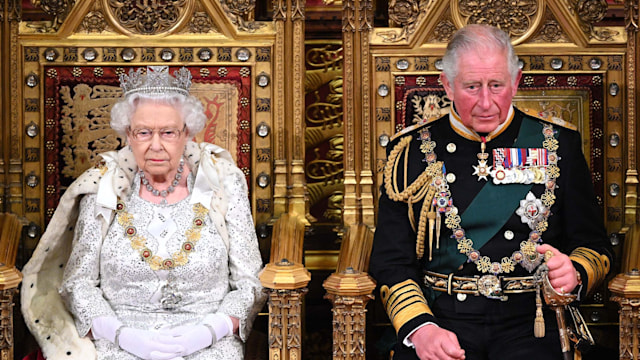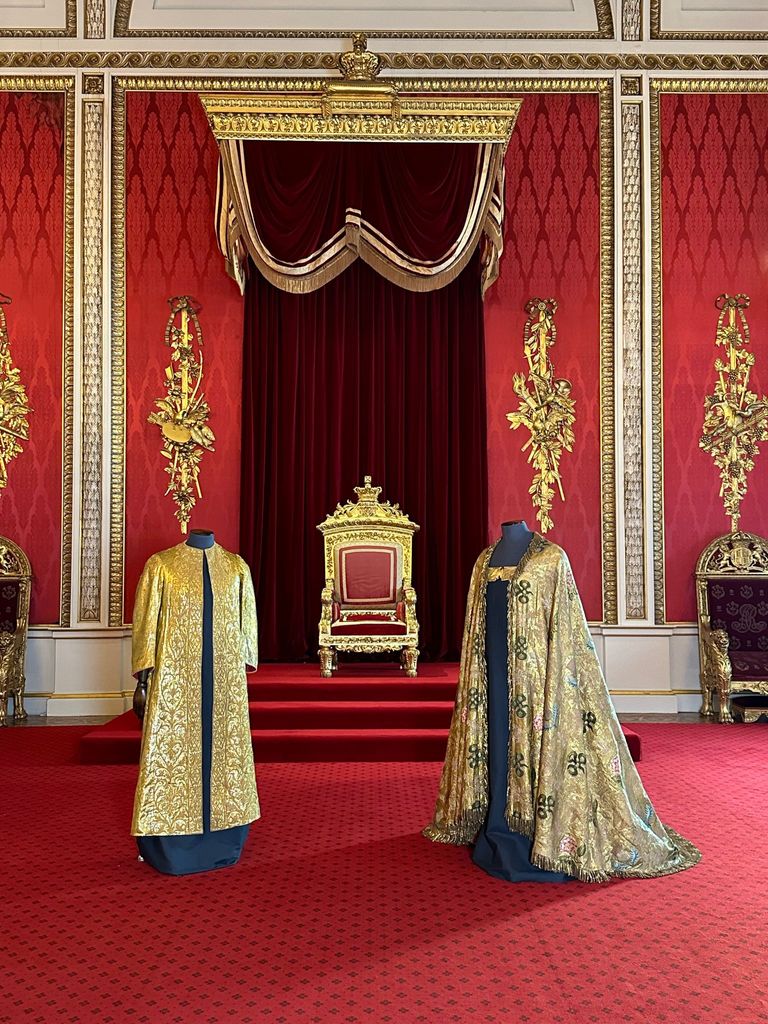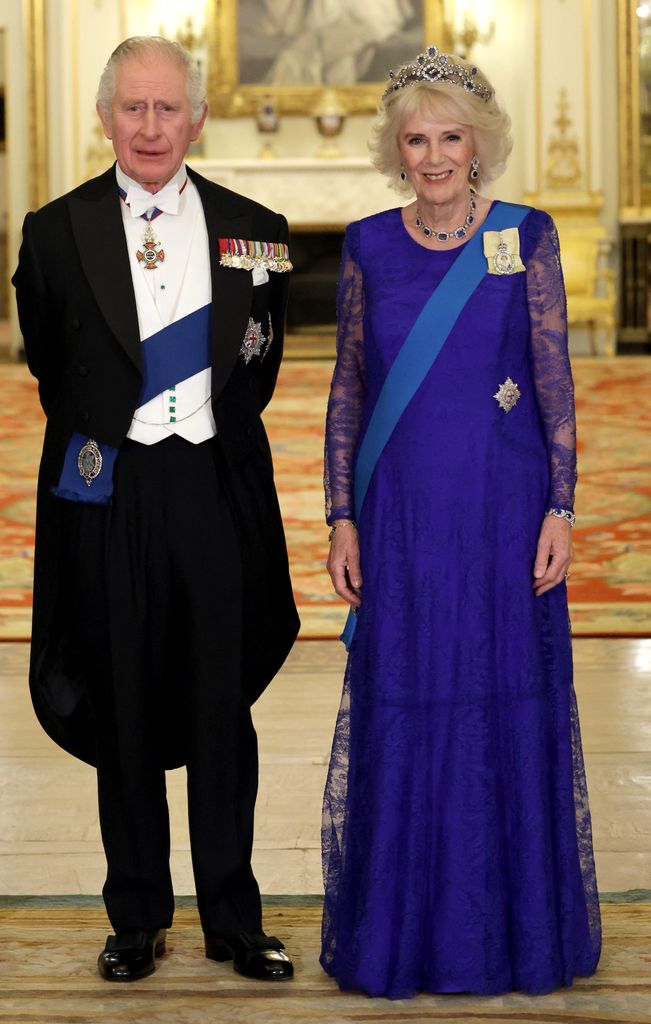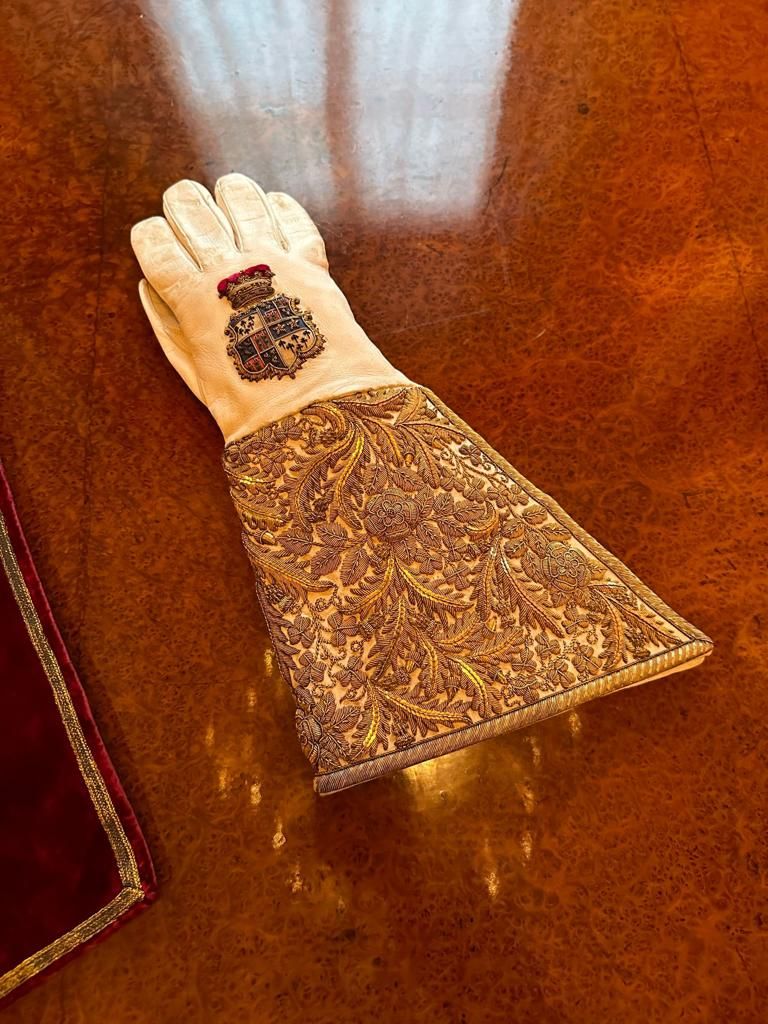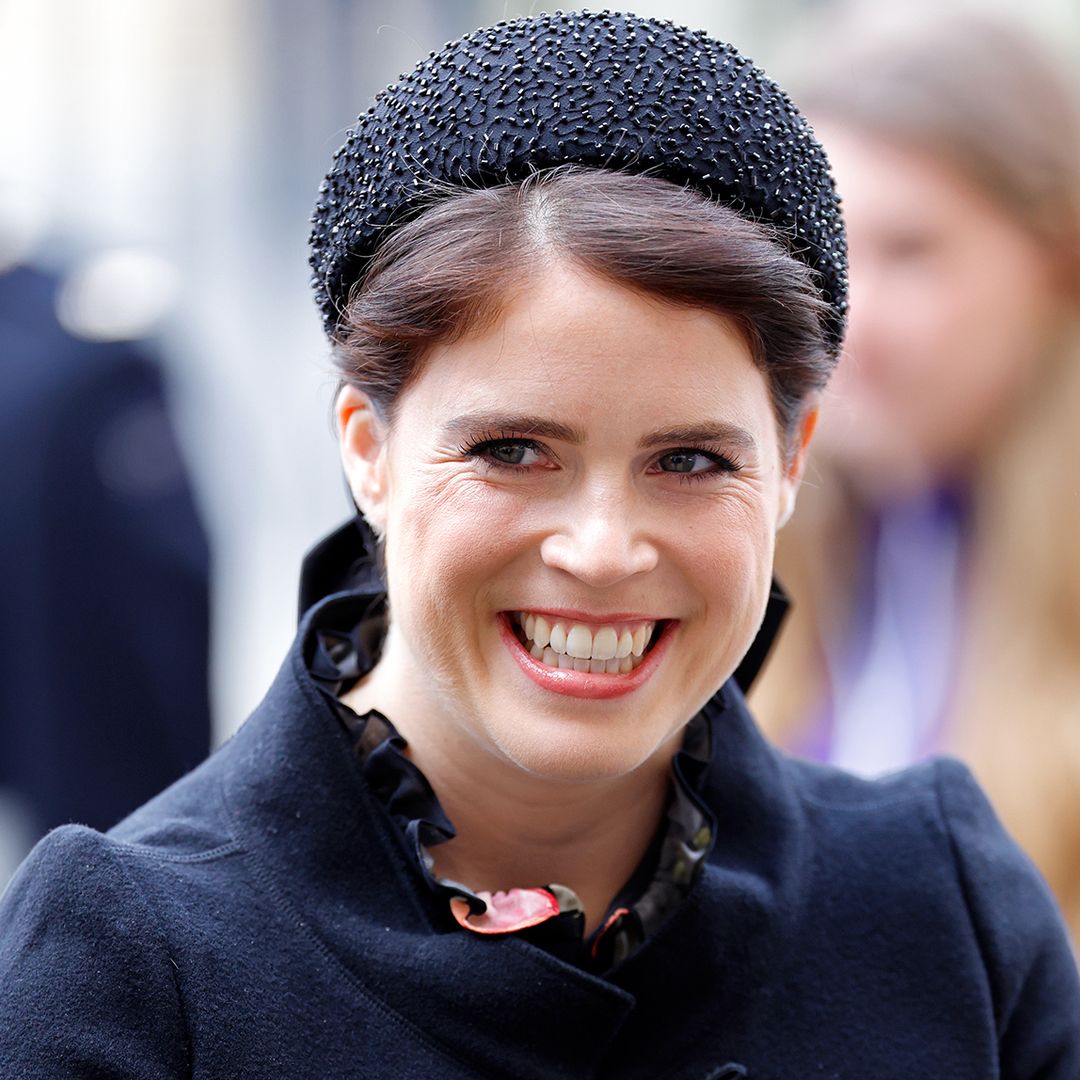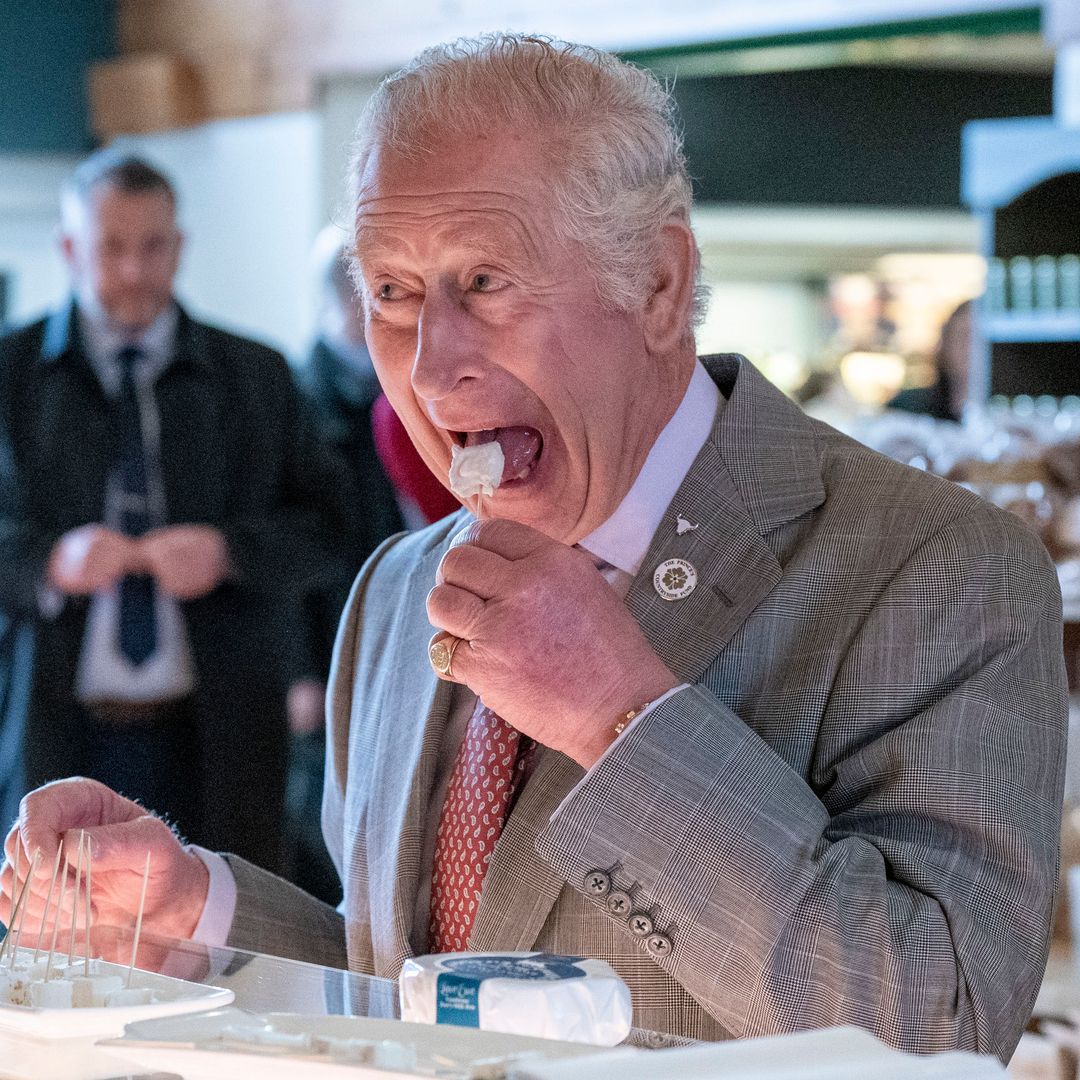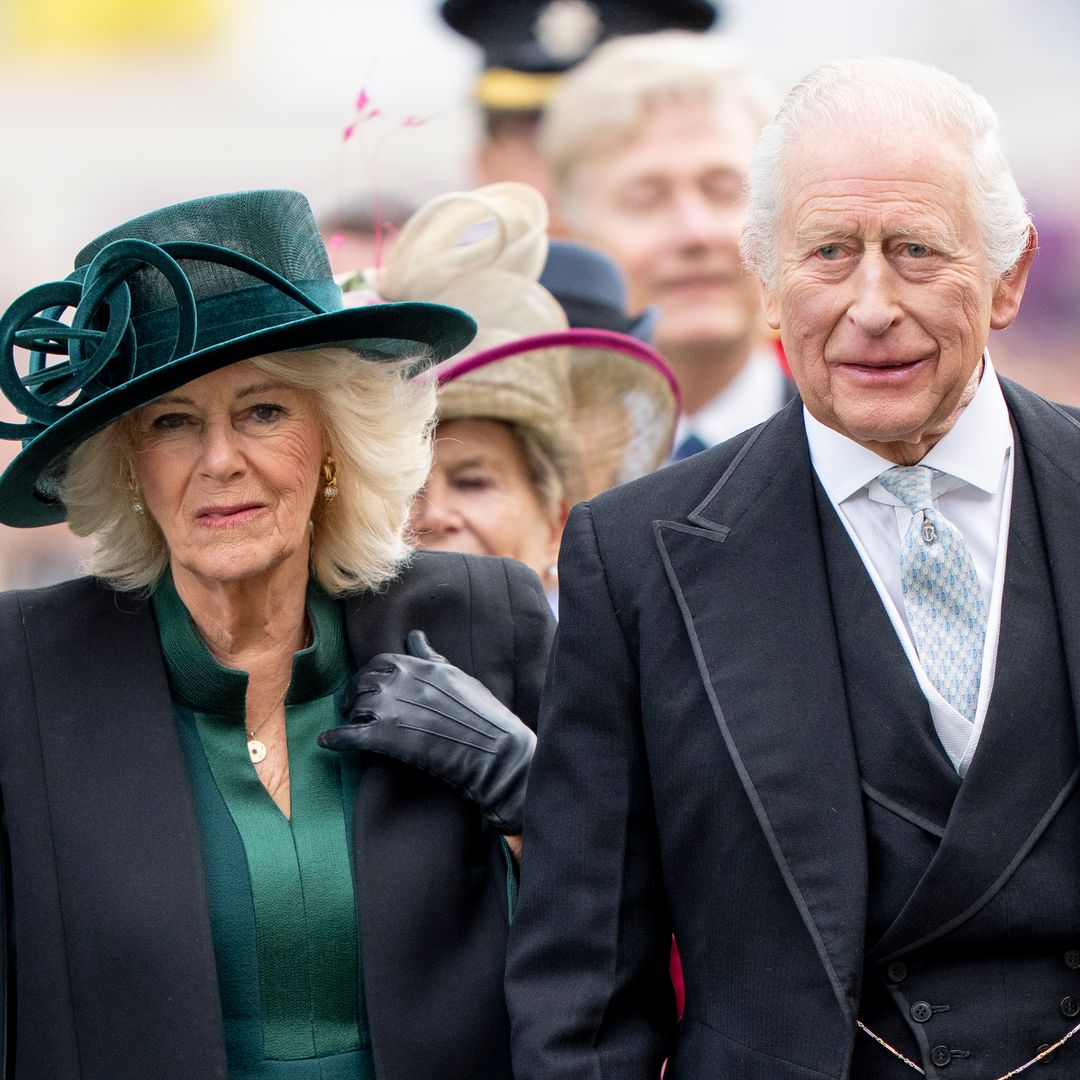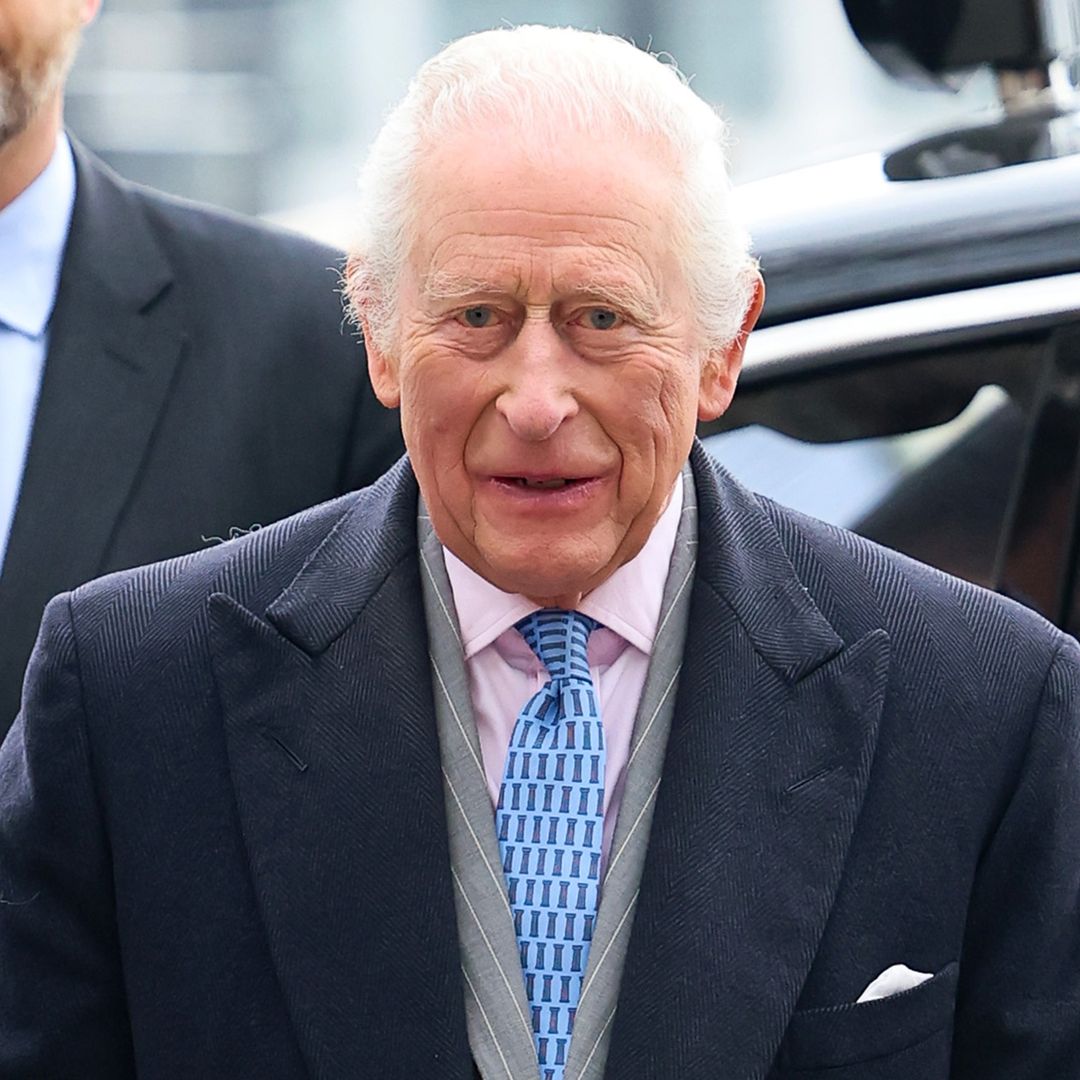The King will re-use gold robes worn by his mother, grandfather and great-grandfather during his coronation at Westminster Abbey. Charles will layer on the priceless garments, which are usually kept with the Crown Jewels inside the Tower of London, during an elaborate ritual at the heart of the May 6 ceremony.
While Buckingham Palace has yet to reveal what the monarch will be wearing beneath the vestments on the day, he will follow in the footsteps of 20th Century sovereigns by putting on the Supertunica, created for George V in 1911 and later the Imperial Mantle, first worn by George IV in 1821 and then worn at all coronations since 1911.
He will also reuse the Coronation Girdle, or sword belt, and Coronation Gauntlet, or glove – both made for his grandfather George VI in 1937 – rather than commissioning new items.
Caroline de Guitaut, Deputy Surveyor of the King's Works of Art at the Royal Collection Trust, said the monarch's choice had been "his personal decision," adding: "It's in keeping with this idea of sustainability and efficiency to reuse these pieces. After all, they are in remarkable condition. And I suppose it's also reflecting back to the coronation of his grandfather, King George VI."
Caroline, who has helped to prepare the precious garments for the ceremony, said: "These are really the most important historic textiles in the Royal Collection and they have a very great history associated with them, having been worn at several coronations both in the 19th and the 20th century. These are robes which have clearly incredible historic significance, but they're also significant because of their sacred nature, used during the investiture part of the coronation ceremony."
Immediately after the anointing, the King will put on the Colobium Sindonis, a linen tunic which symbolises purity and simplicity, which was made for the coronation of his grandfather King George VI in 1937. He will then put on the Supertunica and the coronation girdle, or sword belt, will be fastened at his waist before the presentation of regalia begins.
The Supertunica, traditionally known as the "close pall of cloth of gold" is based on priestly robes worn at royal ceremonies dating back to Byzantine times. It was made for King George V’s coronation in 1911 by Wilkinson & Sons, robemakers to the court.
MORE: The Imperial State Crown - all you need to know about the historic headpiece
The full-length, sleeved garment, which weighs around 2kg, is made from cloth of gold, which is produced by wrapping silk thread with thin pieces of gold or silver metal before it is woven, producing a glittering, but heavy fabric. Its hem and open front have a border in goldwork embroidery, a specialist technique which uses different types of gold thread.
"Like cloth of gold it is actually a Byzantine technique that has its roots in ancient history. But it's a technique that is still practised today in embroidery," said Caroline. "The form of the embroidery is essentially stylised arabesques and stylised floral motifs and this in fact follows the form of previous Supertunicas from coronations dating back many centuries in this country."
The Coronation Girdle, or sword belt, is also made of cloth of gold and embroidered with a similar design to the Supertunica. Its gold buckle is chased and engraved with the National emblems as well. The King will wear it over the Supertunica and Colobium Sindonis.
A girdle is traditionally presented by the Worshipful Company of Girdlers, one of the livery companies of the City of London, for each coronation, but the King has decided to re-wear the one made for his grandfather King George VI’s coronation in 1937.
Conservation work to prepare the belt for May 6 has been carried out by the Royal School of Needlework. When the moment comes for the monarch to be invested with the Jewelled Sword of Offering, it will be attached to the girdle’s gold swivel clip and the monarch will sit briefly, before standing again, when the sword is unclipped and carried to the altar.
"The idea of the jewelled sword of offering is that it rewards the good and punishes the evil, said Caroline. “That's the symbolism of that moment within the investiture."
A new Stole Royal will be placed around his neck by the Bishop of Durham Paul Butler before the Prince of Wales joins Baroness Merron and the assisting bishops to clothe the monarch in the Imperial Mantle, which is described in the liturgy as the Robe Royal.
First worn at the coronation of George IV in July 1821, it was made by John Meyer from cloth of gold supplied by mercers William King and Philip Cooper.
The national emblems of the rose, thistle and shamrock are woven and brocaded into the fabric, along with the imperial eagle and fleur de lys, in a nod to the ancient claim of England over France.
Around the hem and open front is a “bullion fringe”, made from gilt metal and it is fastened across the front with an “elegant chased golden eagle” made by Rundell, Bridge and Rundell, court jewellers to George IV.
The robe, which weighs as much as 4kg, was kept at Westminster Abbey after his coronation and was later privately owned before returning the Crown in the early 20 th Century, when it was used for the coronations of George V, George VI and Elizabeth II.
"It's quite heavy," said Caroline. "I would say, probably in the region of sort of 3-4kg, because cloth of gold is obviously heavy just by its very nature. But also the fringe does add weight."
After the presentation of the Orb and Ring, Lord Singh of Wimbledon will present the King with the Coronation Glove, which he will place on his right hand in preparation to hold the Sovereign’s Sceptre. Also known as the coronation gauntlet, it was presented to King George VI for his 1937 coronation by the Worshipful Company of Glovers, made by Dents the glovemakers and embroidered by Edward Stillwell & Company.
SEE: All you need to know about St Edward's Crown ahead of King Charles III's coronation
Made of white kid leather, it is decorated with goldwork embroidery featuring the Tudor Rose, thistle, shamrock, oak leaves and acorns. The back of the hand is embroidered with a ducal coronet and the coat of arms of the family of the Dukes of Newcastle. The wrist is lined in red satin.
"By tradition the glove is worn just on the right hand for holding the sovereign’s sceptre. It’s an ancient part of the coronation ceremony," said Caroline. The glove has been prepared for the forthcoming service by the Worshipful Company of Glovers.
Want to keep up to date with the latest stories? Sign up to our HELLO! Newsletters today.
